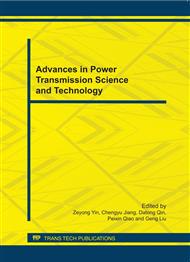p.871
p.875
p.879
p.883
p.889
p.893
p.898
p.904
p.908
Micropitting in Wind Turbine Gearboxes: Calculation of the Safety Factor and Optimization of the Gear Geometry
Abstract:
If the contact pressure between mating flanks of a gear set is increased, the lubricant film thickness in between is reduced to a level where the asperities of the flanks start to touch. This case where the surface roughness is of similar value as the EHD film thickness is called “mixed friction”. Due to the metallic contact of the asperities and the movement of the flanks with respect to each other, the flanks are damaged. The damaged flanks appear dull or greyish, hence the name “grey-staining” (or “Graufleckigkeit” in German), see e.g. [4] or [1]. Micropitting are small cracks on the surface of the gears (as opposed to pitting, where the cracks form below the surface), which grow into the material. The size of the damages is about 10-20 mm depth, 25-100 mm length and 10-20 mm width. Micropitting is mainly observed with case carburized gears but may also be found in nitrided, induction hardened or through hardened gears. Micropitting mainly occurs in areas of negative specific sliding. Negative specific sliding is to be found along the path of contact between point A and C on the driving gear and between point C and E on the driven gear.
Info:
Periodical:
Pages:
898-903
Citation:
Online since:
August 2011
Authors:
Keywords:
Price:
Сopyright:
© 2011 Trans Tech Publications Ltd. All Rights Reserved
Share:
Citation:


